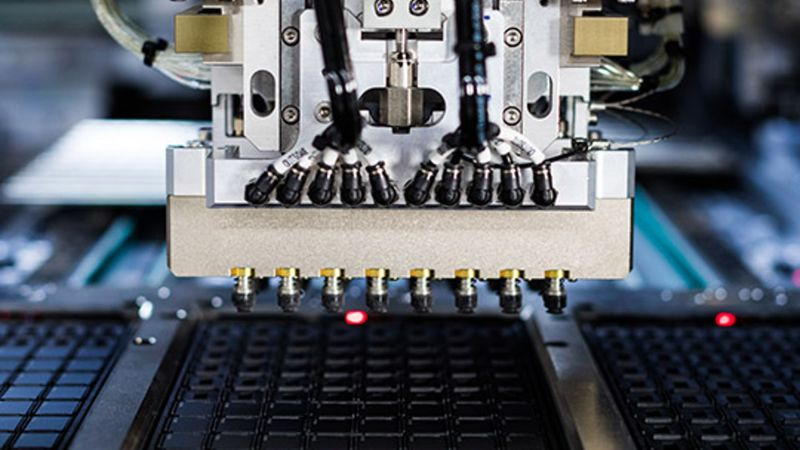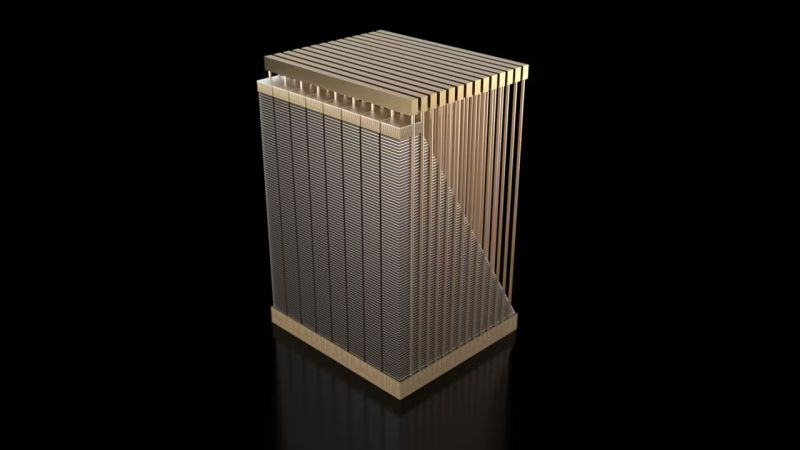The fiscal quarter and the year as a whole in the Micron Technology calendar ended on August 29, so the company summed up their results only this week. Revenue for the last quarter of the last fiscal year rose 93% to $7.75 billion, annual revenue rose 62% to $25.11 billion, but in the current quarter it will reach $8.7 billion, exceeding analysts’ expectations. Against this background, shares of the memory manufacturer rose by almost 15%.

Image source: Micron Technology
The American Micron Technology is still the smallest player in the HBM memory market, since its market share is inferior to both the leading SK hynix and the South Korean giant Samsung Electronics, which ranks first in the world in terms of supply volumes of all types of memory combined. This does not stop Micron from claiming that it is already shipping samples of 12-layer HBM3E stacks with a capacity of 36 GB, only slightly inferior in terms of technological development to SK hynix. The latter, we recall, has already begun their mass production. Micron intends to do this early next calendar year.
The growth of Micron’s share price was also facilitated by the results of the last quarter, which exceeded analysts’ expectations. According to company representatives, a trend toward increased demand for memory chips has also emerged in the PC and smartphone segments. The introduction of local acceleration functions for artificial intelligence systems in these devices implies an increase in the need for memory, so demand for Micron products will grow, according to the company. PC supply volumes at the end of the current calendar year will increase by several percent, according to the company’s management. Growth in the PC market will accelerate next year, largely due to the release of Windows 12 and the end of support for Windows 10. While the average PC contained 12 GB of RAM last year, as AI becomes more common, the minimum amount will become 16 GB of RAM, and in In the middle and upper price ranges, the norm will be 32 and 64 GB of RAM, respectively.
Micron’s competitive position is also strong in the server memory segment, as management notes. High demand for HBM forced Micron to distribute all quotas for its production not only for the current year, but also for the next year. In the smartphone segment, shipment volumes at the end of the 2024 calendar year, according to Micron, will grow by up to 5%, and will continue to grow in 2025. If last year flagship smartphones were equipped with an average of 8 GB of memory, then next year the norm will rise to 12 or 16 GB.
Micron expects to finish the current fiscal quarter with record revenue of $8.5 to $8.9 billion. At the same time, the company’s profit margin will reach 39.5%. Last quarter, the profit margin did not exceed 35.3%, but the year before that it was generally negative. Analysts on average expected $8.28 billion in revenue and a 37.7% profit margin in their forecasts for the current fiscal quarter, which is why the company’s shares jumped in price after the release of the report. In the coming fiscal year, Micron expects to generate multibillion-dollar revenue in three categories: HBM, high-capacity random access memory and server solid-state memory. Last fiscal year, Micron increased the share of server-grade memory in total revenue to a record level.
Last quarter, Micron achieved record revenue in its NAND and SSD segment. Based on the results of the entire last fiscal year, the company achieved record revenue in the server and automotive areas. In the next calendar year, Micron hopes to begin mass production of DRAM chips using 1γ-class EUV technology, with pilot production already underway.

The company is moving forward with construction of a new facility in Idaho and is awaiting government approval to build a facility in New York State. An enterprise for testing and packaging memory chips is being built in India, and the Chinese enterprise Micron of this profile is expanding even in the face of mutual sanctions from the United States and China. Micron’s acquisition of Innolux’s LCD panel manufacturing facility in Taiwan will be converted to testing and assembling DRAM memory chips.
HBM deliveries generated hundreds of millions of dollars in revenue last fiscal year, company officials explained. In 2025, the HBM market will reach $25 billion, up from $4 billion two years earlier, as Micron expects, and the company’s share of the HBM market should be equal to its position in the DRAM market as a whole.
Demand for DRAM at the end of the current calendar year, according to Micron, will grow by up to 19%, for NAND memory – around 15%, and next year both segments will show an increase in memory sales volumes by an average of 15%. Memory prices will rise in 2025 due to limited production capacity compared to demand.
Micron’s capital expenditures reached $8.1 billion last fiscal year and will be much higher this year, reaching 35% of projected revenue. This will mainly be caused by the need to increase the production of HBM and build new enterprises in the United States, which will be subsidized by the authorities under the “Chip Law”.
In the past fiscal quarter, Micron’s revenue was 69% determined by the sale of DRAM chips. The company’s core revenue grew by 93% year-on-year and reached $5.3 billion. At the end of the entire fiscal year, DRAM shipments increased Micron’s core revenue by 60% to $17.6 billion, which corresponds to 70% of the company’s total revenue for the period.
In principle, revenue from sales of NAND in the fourth fiscal quarter did not lag behind the dynamics of the DRAM segment, increasing by 96% to $2.4 billion, but this type of product accounted for no more than 31% of Micron’s total revenue. Moreover, the company generated record revenue in the NAND segment last quarter. At the end of the year as a whole, core revenue increased by 72% to $7.2 billion, but this amount corresponds to only 29% of the company’s total revenue.
A breakdown of the revenue of the fourth fiscal quarter by business area looks like this: computing and network solutions covering the server segment added sequentially 17% to $3 billion, the mobile division, due to seasonal phenomena, increased revenue by 18% sequentially to $1.9 billion. In the segment storage systems revenue growth of almost a quarter sequentially to $1.7 billion was driven by demand for solid-state drives for server use, in which a new revenue record was set. Strictly speaking, revenue from NAND sales for the entire fiscal year was also a record for Micron. Finally, in the embedded solutions segment, Micron’s revenue declined 9% on a sequential basis to $1.2 billion.